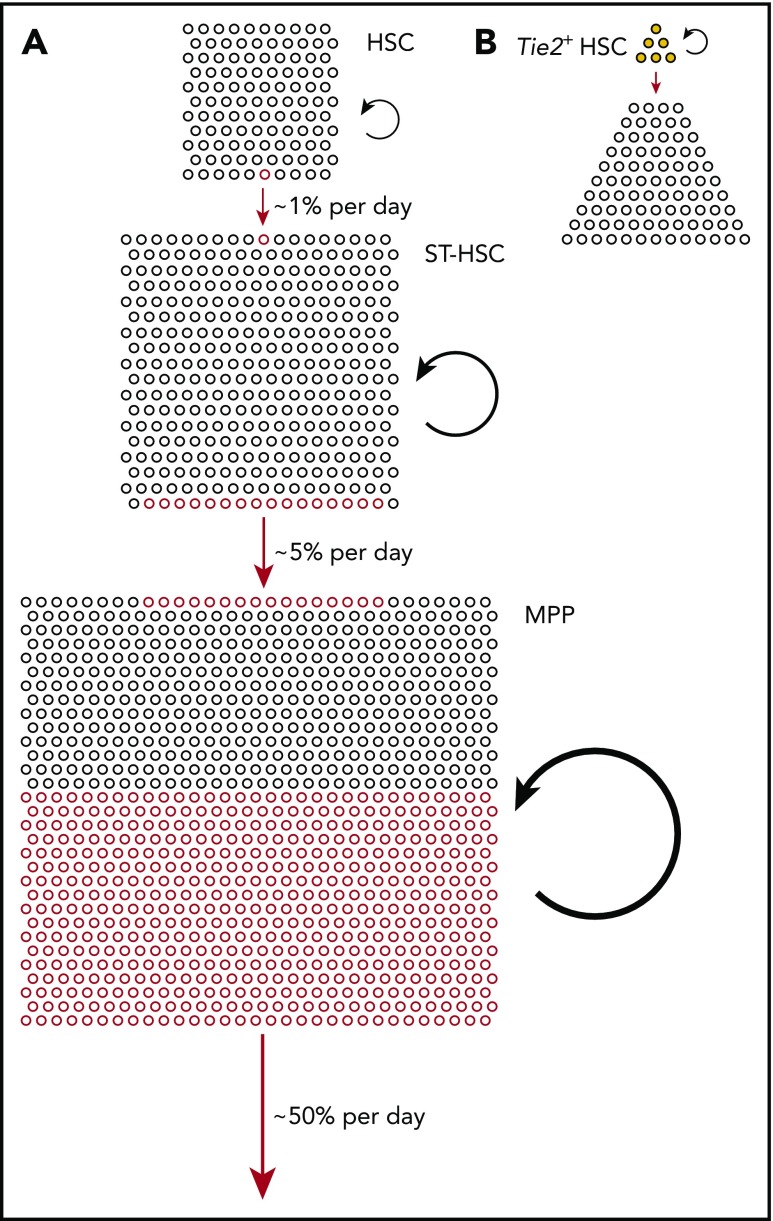Figure 1.
Physiological hematopoiesis is fueled by a hierarchically organized, broad basis of (almost) self-renewing stem and progenitor cells. (A) Relative compartment sizes of HSCs (Lin−Sca+Kit+CD150+CD48−), ST-HSCs (Lin−Sca+Kit+CD150−CD48−), and MPPs (Lin−Sca+Kit+CD150−CD48+) (all phenotypes according to Oguro et al15) are drawn to scale. Based on the measured output from Tie2+ HSCs,8 we estimated the frequencies of differentiating cells in each compartment, indicated by red circles (lower side, outgoing; upper side, incoming). The continuous but rare input from Tie2+ HSCs is greatly amplified in ST-HSCs and MPPs to sustain overall output (red arrows); to achieve this, the rates of self-renewing cell divisions also increase from HSCs to ST-HSCs to MPPs (black circle arrows). (B) Fate mapping data from Tie2MeriCreMer knock-in mice,8 and the comprehensive functional characterization of Tie2+ vs Tie2− HSCs in Tie2 reporter mice,21 indicate heterogeneity of the HSC compartment, with Tie2+ HSCs residing at the tip, differentiating, and self-renewing.

